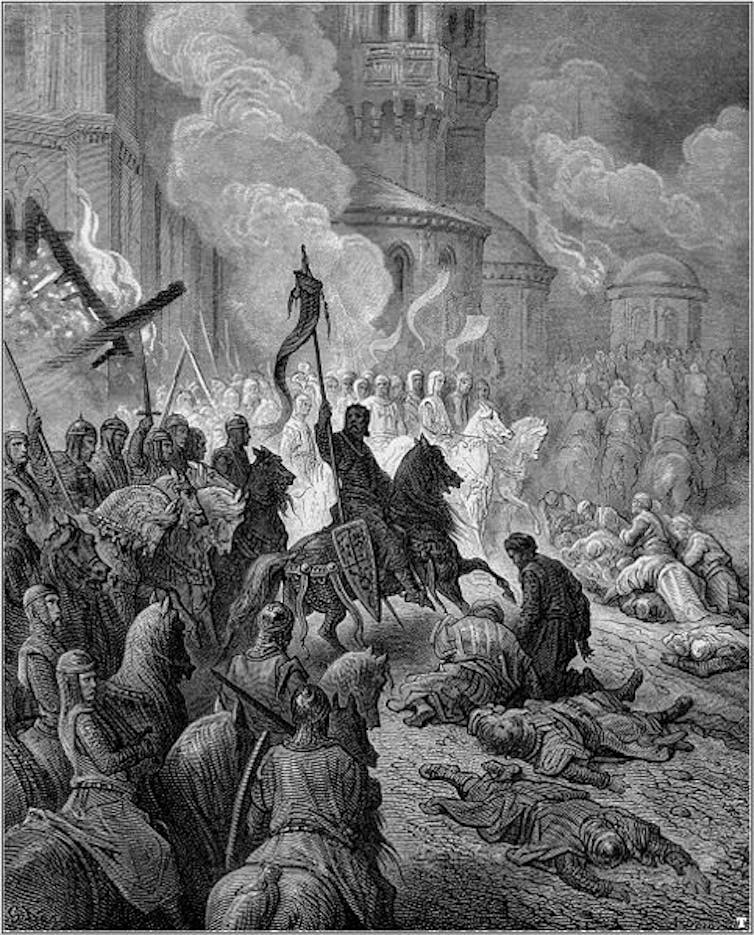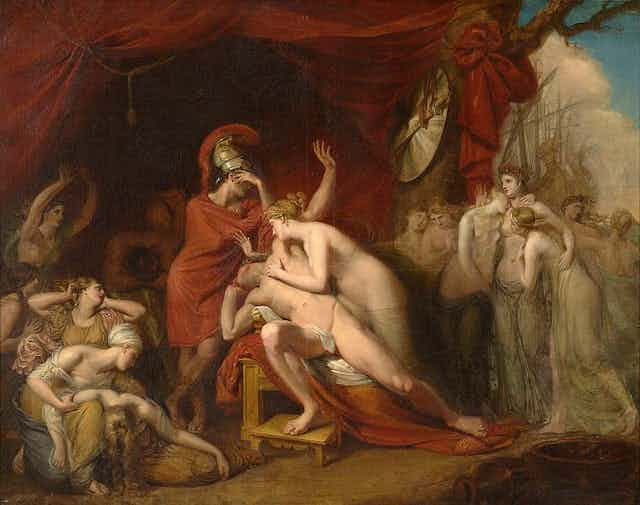In the BBC’s Bodyguard, Richard Madden plays a police protection officer and veteran soldier who is exhibiting signs of PTSD. In episode three he tries to strangle the woman he is supposed to be safeguarding. Later, a friend suggests he seek counselling. This image of the suffering veteran dominates modern views of the soldier experience, but was this the case in ancient and medieval warfare?
Achilles, hero of the Trojan war, is commonly held to be an ancient sufferer of PTSD, thanks largely to Jonathan Shay’s Achilles in Vietnam about the psychological damage caused by war, while Epizelus’ spontaneous blindness at the Battle of Marathon (490BC) is often cited as another example.
So popular is the contemporary idea that PTSD was common in the ancient world that ancient plays are now being used to help modern veterans. In May 2017, more than 100 servicemen and veterans watched extracts from Sophochles’ plays which portray what many see as ancient examples of PTSD, as a way of getting them to talk about their own experiences.
More recently, researchers at Anglia Ruskin University in Cambridge claimed that the earliest examples of PTSD can be found in ancient Mesopotamia (present-day Iraq) 3,000 years ago. The sources they looked at described how the King of Elam’s “mind changed” after years of fighting. Soldiers there had to go on campaign every three years after which they had flashbacks and dreams about their dead comrades, symptoms now commonly ascribed to PTSD.
But there is another school of thought that says the experience of the ancient soldier was not universal. His experience was a product of his culture, and therefore he was more able to deal with the traumas of war because he was conditioned to fight. Killing enemies was a glorious thing – and rather than going against what society expected, ancient warriors were fulfilling a clearly defined role.
Read more: Why war evolved to be a man's game – and why that's only now changing
Medieval warfare
The same has been said of knights in the Middle Ages who were trained to fight from a young age, a factor which arguably made them more resilient to the psychological impact of warfare, as did the fact that medieval society was more used to death and brutality. In 15th-century France, people certainly believed that warfare caused a kind of madness, but they differentiated between the good and the bad. Soldiers traumatised by war who went “beserk” were celebrated – while noncombatants traumatised by war were pitied or ridiculed.
But killing was a sinful act, and in the Christian Middle Ages, writers wrestled with the issue of exactly when and how it was morally acceptable. They also thought about how homecoming fighters could make amends. A few years after the Battle of Hastings (1066) William the Conqueror faced rebellion from some of his own men, in part perhaps because they found the violence of his conquest had gone too far. Certainly, contemporary descriptions of the Harrying of the North, when William’s troops ravaged northern England, suggest that it was particularly brutal.
Indeed, the effort medieval churchmen put into thinking about ways to atone for killing in warfare suggests that there was a real awareness of the need to ritualise the return to normal life. Penances were imposed on the men who fought at Hastings in 1066. The philosopher Thomas Aquinas warned that warfare had the potential to be sinful as in battle soldiers could get carried away and engage in savage murder which needed to be forgiven.

Even during the crusades – wars believed to be sanctioned by God and fought on his behalf – some knights came home changed by their experiences. When one chronicler described the crusaders coming home from the Third Crusade (1189-92), he told his readers that though these men “survived unharmed … their hearts were pierced by swords of sorrows from different sorts of suffering”.
Some knights warned about the dangers of warfare and the toll it could take on those who fought. Geoffrey de Charny, a French knight who fought in the Hundred Years War, warned other knights in his Book of Chivalry that they would face lack of food and water, have to fight through the night and suffer many dangers. He cautioned that “when they would be secure from danger, they will be beset by great terrors”, suggesting that though they were trained for war they could be terrified by it.
Fighters in the past were clearly affected by their experiences, expressed feelings of fear, shame, or anger, or otherwise suffered as a result of the psychological traumas of war, whatever those traumas might be.
This does not mean that their experiences or responses were universal, or that we can judge the trauma of a 14th-century knight by the same standards as a 21st-century soldier. But it does show that trauma and distress have followed as long as humans have waged war on one another.

